1.3 Physical Media:
The three types of most commonly used physical media are given below:
1. Coaxial
2. Twisted Pair
3. Fiber Optic
4. Wireless
Coaxial cable: Coaxial cable is one of the most widely used physical media. As shown in the figure below, it consists of the following:
Note that this is for a typical coax (short for co-axial) cable and available in different varieties. Most popular are RG-8, and RG-58 cables.
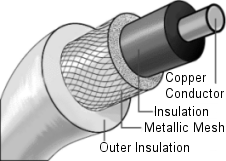
Co-axial Cable diagram
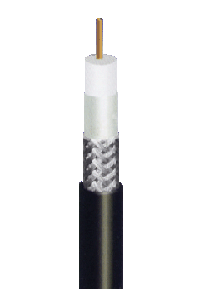
RG-8 Coax
Thin Etherne (10Base2): The Thin Ethernet (Thinnet or 10Base-2) is one of the widely used form of LAN cabling. Other form of co-axial cabling is called Thick Ethernet. Thin Ethernet uses RG-58A/U cable, whereas Thick Ethernet uses a bit fatter, and more expensive RG-8 cable. Thinnet cables use BNC connectors on either end of RG-58A/U cables. 10Base-2 uses transceivers to transmit and receive signals. The transceiver is normally built into the NIC (Network Interface Card)
A transceiver is a device that translates digital signals from a node (or workstation) and translates it baseband signals to communicate on the cabling system. NICs that support Thinnet (10Base2) have built-in transceivers. External transceivers are used for 10Base5 Thicknet.
Thick Ethernet (10Base5): The 10Base5 topology uses an external transceiver to attach to the network interface card. The NIC attaches to the external transceiver by an AUI cable to the DIX connector on the card. Vampire tap, standard BNC, or N-series barrel connectors are used for connecting the transceiver to thicknet cable. Each network segment must be terminated with matching impedence at both ends.
| Ethernet Type | Popular Name | RG-Rating | Comments |
|
10Base2 |
Thinnet | RG-58 A/U | 1. 50 Ohm cable 2. Uses stranded center conductor. |
| 10Base5 | Thicknet | RG-8 | 1. 50 Ohm cable. 2. Uses solid center conductor. |
Table: Coaxial cable Types
Twisted-Pair Cable: Twisted-Pair cable consists of multiple, insulated wires that are twisted together in pairs. Sometimes, a metallic shield is placed around the twisted pairs, and it is called shielded twisted-pair (STP). Normally, the cable is used without shielding of individual wire-pairs, and it is called Unshielded Twisted-Pair cable (UTP cable). The twisting of wires reduces electromagnetic interference in the form of cross-talk.
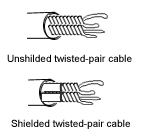
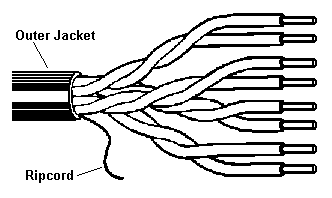
Unshielded Twisted Pair-Figure
Fiber-Optic Connector:
Two most commonly used fiber-optic connectors are:
The SC Connectors are latched connectors; the latching mechanism holds the connector in securely while in use.
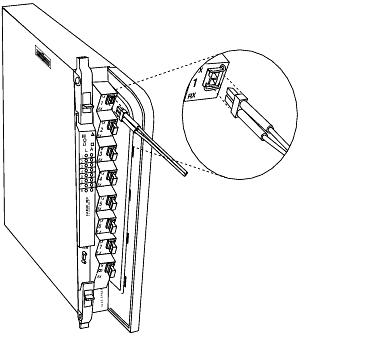
Installation of Fiber Optic Connector/Cable-Figure 12
Disclaimer: Simulationexams.com is not affiliated with any certification vendor, and Sim-Ex™ Practice Exams are written independently by SimulationExams.com and not affiliated or authorized by respective certification providers. Sim-Ex™ is a trade mark of SimulationExams.com or entity representing Simulationexams.com.A+™,Network+™,Security+™,Server+™ are trademark of CompTIA® organization.